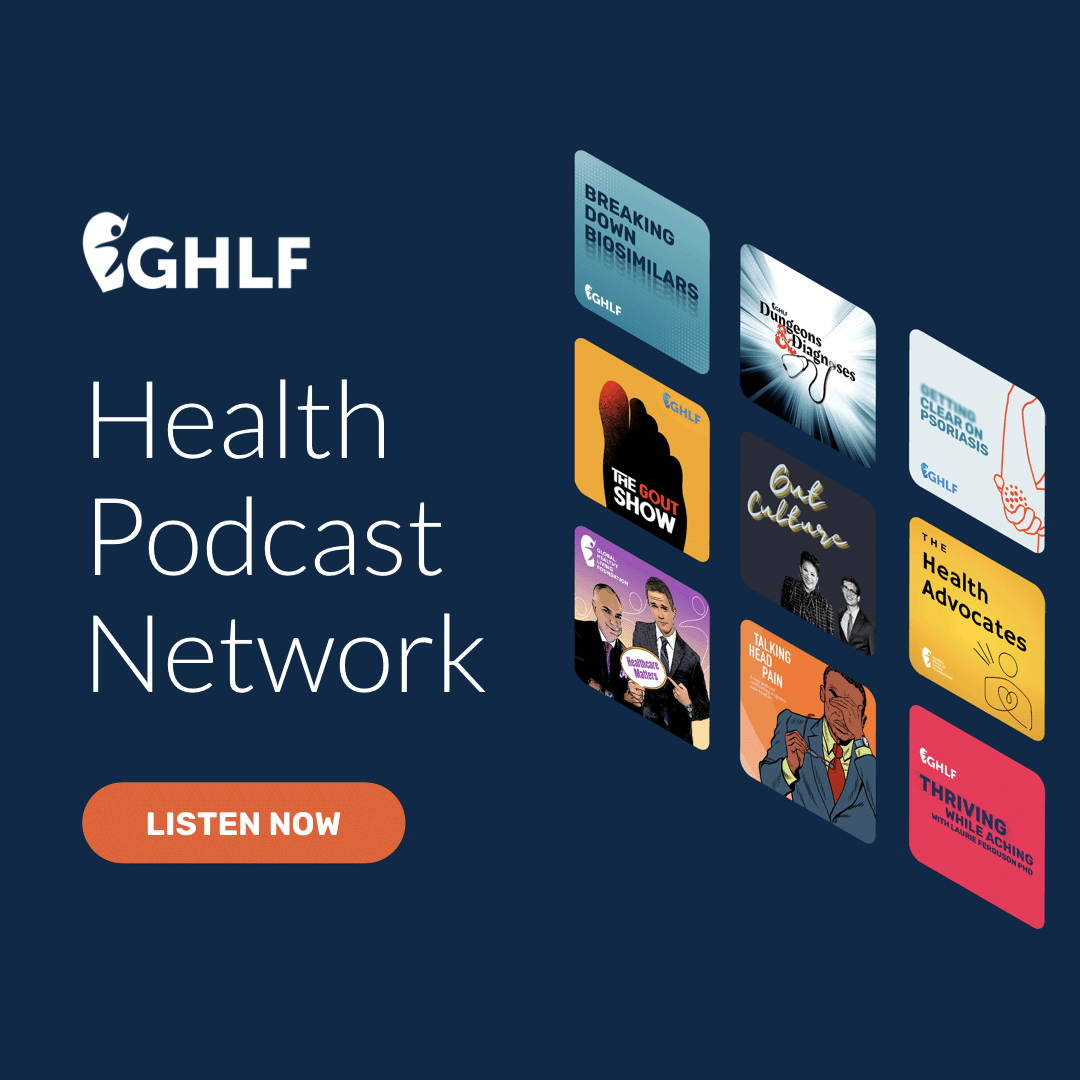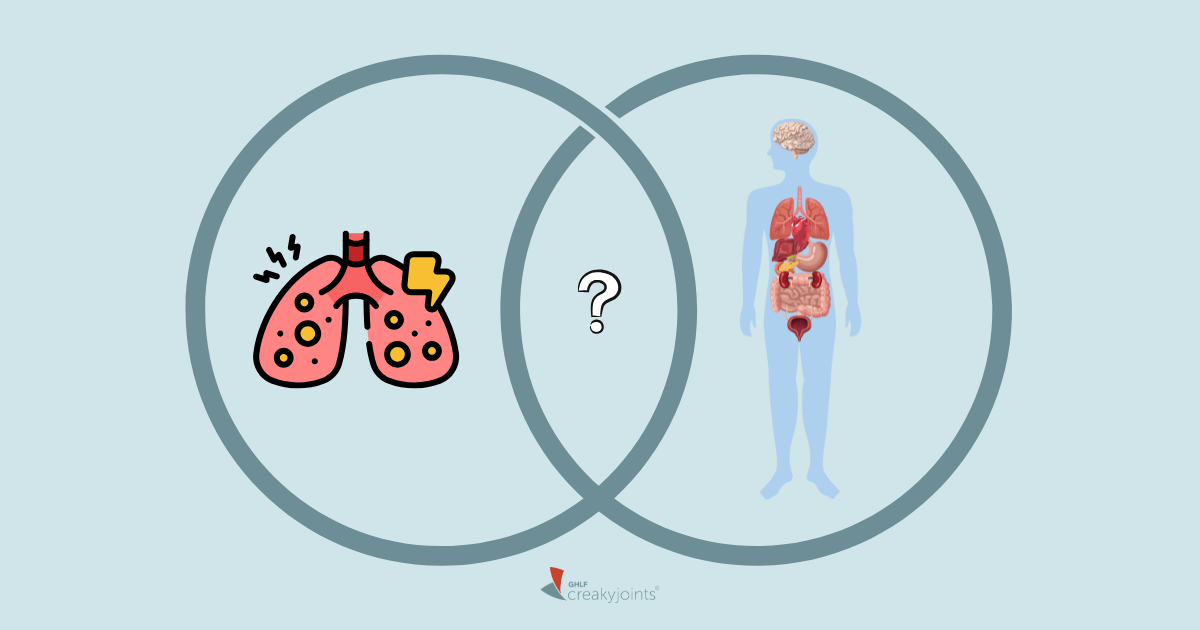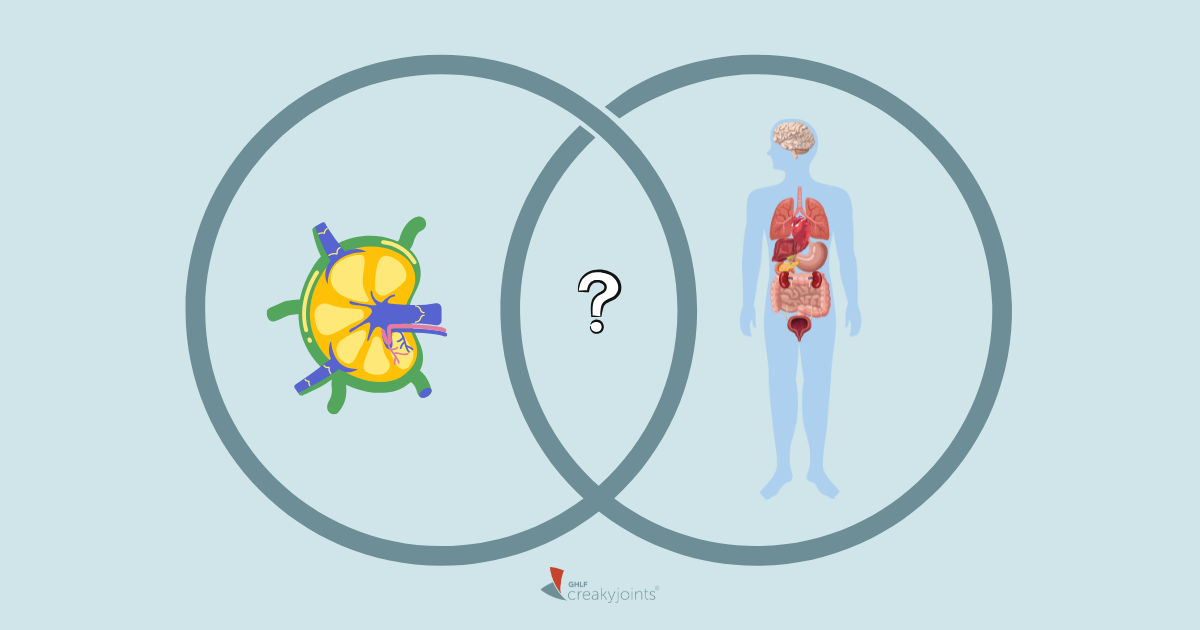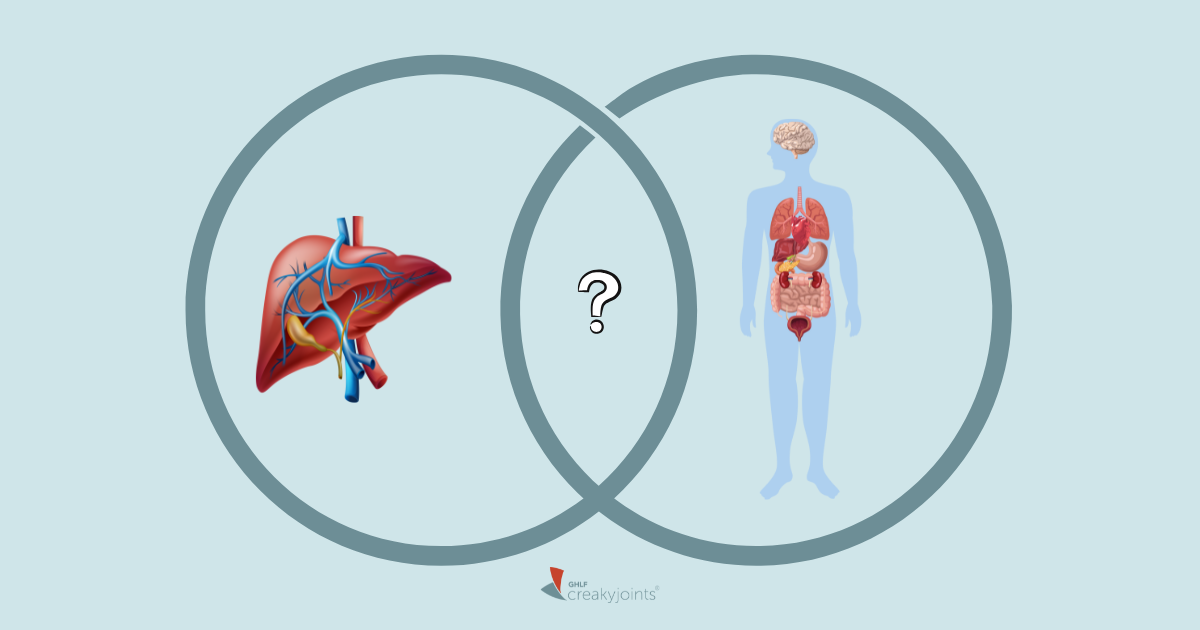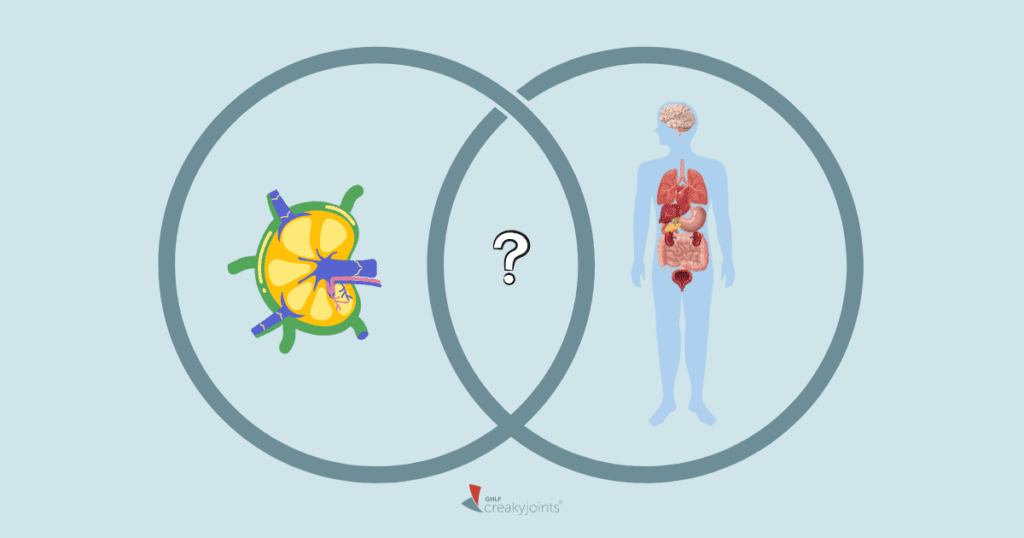

Andy Provencher never imagined a mountain bike accident in June 2020 would lead to a 14-month medical odyssey. At 44, with no major health concerns, he expected the ER visit to focus on his broken ribs, punctured lung, and collarbone fractures. Instead, a CT scan revealed pulmonary nodules, and doctors quickly delivered the unthinkable — it looked like stage 4 lung cancer.
That shocking diagnosis sent Andy and his family into a whirlwind of fear. “I went from ‘My wife’s gonna kill me for crashing my bike’ to ‘Holy Moly, I might not live like I thought I was going to,'” he recalls.
But as more tests followed, the certainty of cancer began to unravel. A tracheotomy to retrieve lymph node samples came back negative, yet the nodules kept growing. A robotic lung biopsy ruled out lung cancer and lymphoma — but what was causing his symptoms? Meanwhile, Andy’s fatigue and shortness of breath worsened, taking a toll on his physical and mental health. His wife, a social worker, became his rock, meticulously tracking every test and doctor’s note as they sought answers.
Andy describes the frustration of coming up empty-handed. “I’d go to these appointments, and as soon as they started talking about cancer, my head just starts spinning. I walk out of there, and all I know is I got another appointment with another doctor.”
Then came a late-night call from a hematologist reviewing his pathology report. “I think I know what you have,” the doctor said. For the first time in over a year, there was a name: Castleman disease (CD).
But even that wasn’t the final answer. A physician assistant (PA) at his rheumatology office mentioned something new: Immunoglobulin G4-related disease, or IgG4-RD, a rare autoimmune condition. That suggestion changed everything. The PA connected Andy with Dr. John Stone in Boston, an expert in IgG4-RD. After reviewing his case and running tests, Dr. Stone finally delivered the long-awaited answer. “I still listen to the voicemail he left me,” Andy says. “He said, ‘We know exactly what this is. We know exactly how to treat it.'”
What Makes IgG4-RD and Castleman Disease So Hard to Tell Apart?
Sometimes, rare diseases can look alike, making diagnosing them a real challenge. IgG4-RD and CD are two such conditions — they share overlapping symptoms, like swollen lymph nodes, unexplained fevers, or organ inflammation, which can cause confusion at first. However, while they might seem similar on the surface, the reasons these symptoms occur are very different. That’s why it’s so important for doctors to carefully study your symptoms and test results to ensure you get the proper diagnosis and care. Let’s look closer at both conditions to understand the similarities and differences.
What Is Castleman Disease?
Castleman disease is a group of rare disorders that keep your immune system active when it shouldn’t. Typically, your immune system turns on to fight off infections like colds or the flu, then calms down when the threat is gone. But with CD, the immune system stays stuck in high gear, causing too much inflammation, which can harm your organs and make you very sick.
Lymph nodes are small organs that help fight infections by filtering out germs. When you get sick, they swell as they work harder. In CD, one or more lymph nodes stay swollen and don’t return to normal.
What is IgG4-RD?
Immunoglobulin G4-related disease (IgG4-RD) is an immune condition that causes inflammation and fibrosis, or scar tissue. IgG4-RD often presents as mass-like growths in organs such as the pancreas, salivary glands, and kidneys, making it difficult to distinguish from other conditions. As a result, misdiagnosis can occur, sometimes leading to unnecessary treatments like surgery or chemotherapy, which are not effective for this disease.
Many individuals with IgG4-RD have elevated levels of an antibody called IgG4 in their blood. Additionally, affected organs typically show an increased number of IgG4-expressing plasma cells. To diagnose IgG4-RD, doctors commonly conduct a blood test to measure IgG4 levels and may perform a biopsy to examine tissue samples.
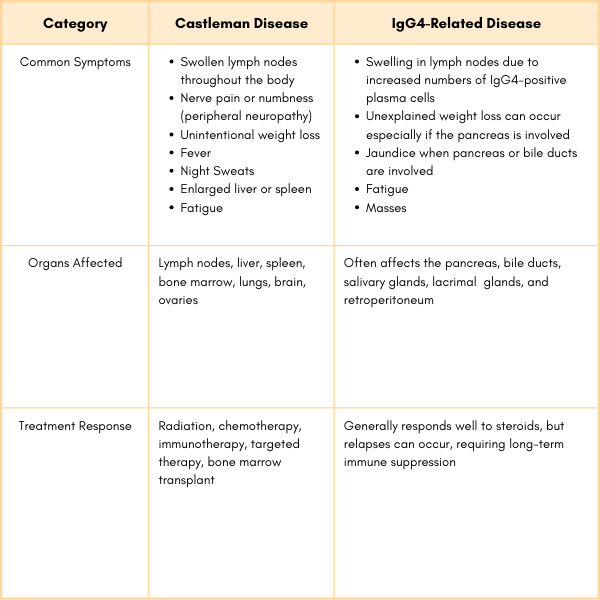

How Awareness of IgG4-RD Is Growing
IgG4-RD can be mistaken for CD because they look very similar, sometimes leading to misdiagnosis. Dr. Matthew C. Baker, a rheumatologist and Stanford University expert on IgG4-RD, shares some background that may impact why some doctors may not know about IgG4-RD.
“There were probably case reports long ago, but the first real description of the disease was in 2003,” says Dr. Baker. “Then it wasn’t sort of rediscovered in the U.S. until 2008. Even then, it took a couple of years before it was clear what was going on, and it started being talked about in research.”
Fortunately, IgG4-RD received an ICD-10 code in October 2023. An ICD-10 code (International Classification of Diseases, 10th Edition) is a standardized alphanumeric code used by health care providers, insurers, and researchers to classify and track diseases, conditions, and procedures. Each code corresponds to a specific diagnosis, making it easier to document medical conditions consistently across health care systems. For a rare condition like IgG4-related disease, having an ICD-10 code is crucial for improving diagnosis and awareness, ensuring insurance coverage and reimbursement, facilitating research and data collection, and supporting advocacy efforts for better treatment and funding.
“Going forward, having the ICD-10 code will enable us to do much more robust clinical research,” remarks Dr. Baker.
Both CD and IgG4-RD can cause higher-than-normal levels of a protein called IgG4 in the blood. In both diseases, lymph node biopsies may show a buildup of immune cells called IgG4-positive plasma cells. Think of this buildup like a traffic jam. Normally, immune cells — like cars — move around smoothly, keeping your body running well. But in some areas, too many immune cells pile up, creating a “traffic jam” that leads to problems. Doctors study these “jams” to determine what’s happening and how to treat it.
How are IgG4-RD and Castleman disease different?
Although IgG4-related disease (IgG4-RD) and Castleman disease (CD) can look alike, some important differences help doctors tell them apart.
Tissues show different features under a microscope. Both diseases can have IgG4-positive plasma cells, but IgG4-RD typically has unique signs like storiform fibrosis (a scar-like pattern) and inflammation that blocks medium-sized veins (obliterative phlebitis). CD usually lacks these features.
What questions should you ask your doctor?
Don’t hesitate to ask your doctor questions if you’ve been told you might have one of these conditions. Talking openly with your doctor can help ensure you get the correct diagnosis and treatment. If you’re worried about a possible misdiagnosis, here are some helpful questions to ask:
Have my IgG4 levels been tested, and do they affect my diagnosis?
Did my biopsy show signs like scar tissue patterns (storiform fibrosis) or blocked veins (obliterative phlebitis), which are more common in IgG4-RD?
Have all the organs involved been checked to confirm it’s Castleman disease and not IgG4-RD?
Should I see a specialist focusing on conditions like IgG4-RD or lymph node diseases?
How would my treatment change if it turned out to be IgG4-RD instead of Castleman disease?
You’re Not Alone
After 14 months of being stuck in the medical maze, Andy finally had a diagnosis — and a plan. But the journey left him with a realization: the emotional toll of being undiagnosed is just as devastating as the physical symptoms. His advice to others? Advocate for your mental health just as much as your physical health. Because sometimes, the hardest part isn’t just finding the right doctor — it’s surviving the wait.
Andy hopes for better mental health resources for patients going through a tough time getting diagnosed or facing a difficult diagnosis. “I’ve always been a big advocate of mental health, and I’ve always been a big advocate of checking on my buddies when they’re quiet and knowing what to look for, but when it’s you, it just locks you up to the point where you can’t talk, you can’t think about it,” he says.
If you’ve been diagnosed with Castleman disease but suspect it might be IgG4-related disease, know that you’re not alone in navigating this complicated diagnostic journey. These two conditions may look similar initially, but recognizing their key differences — such as the affected organs, immune system activity, and biopsy findings — helps ensure an accurate diagnosis and proper treatment.
Keep Advocating for Yourself
Though the road to diagnosis was long and overwhelming, Andy credits his wife’s unwavering support and note-taking with helping them navigate the chaos. Looking back, he wishes there had been more focus on mental health throughout the process. “I always checked on my buddies, making sure they were okay, but when it was me, I was just stuck,” he admits. “If there were more tools for patients, that would be really helpful.”
Andy has a treatment plan now and is even participating in a clinical trial. He hopes his story raises awareness so that others facing a similar journey don’t have to endure the same uncertainty. “We’re just grateful to be part of something helping move things forward,” he says.
Don’t hesitate to ask your doctor questions and advocate for additional testing or a second opinion. Your health is too important for guesswork, and confirming your diagnosis can make all the difference in finding a treatment plan that works best for you.
Remember, knowledge is power, and being informed about these conditions helps ensure you’re on the path to the care you deserve.
Learn More About IgG4-RD
Click here to get more information on IgG4-RD including a guide to getting diagnosed, managing symptoms, and treatment options.
This article was made possible with support from Amgen.
Baker, Matthew C, MD. Personal Interview. Division of Immunology and Rheumatology Clinical Chief and Assistant Professor of Medicine, Stanford University. February 3, 2025.
Provencher, Andrew. Personal Interview. February 7, 2025.
Dispenzieri, A., et al. Overview of Castleman Disease. Rare Systemic Hematology Disorders. 2010. Doi: https://doi.org/10.1182/blood.2019000931.
Hi, J., Peng, J. Mixed-type Castleman Disease can mimic IgG4 Related Disease. Archives of Rheumatology. 2024. Doi: https://doi.org/10.5606/ArchRheumatol.2018.6891.
Sasaki T, Akiyama M, Kaneko Y, et al. Distinct features distinguishing IgG4-related disease from multicentric Castleman disease. RMD Open. 2017. Doi: https://doi.org/10.1136/rmdopen-2017-000432.
Stone, John. “New ICD-10 Code Is an Important Milestone for Rare Disease Patients.” HCPLive, 29 Oct. 2023, https://www.hcplive.com/view/new-icd-10-code-is-an-important-milestone-for-rare-disease-patients.
Takanori S., et al. Immunoglobulin G4–related disease and idiopathic multicentric Castleman disease: confusable immune-mediated disorders. Rheumatology. 2022. Doi: https://doi.org/10.1093/rheumatology/keab634.

